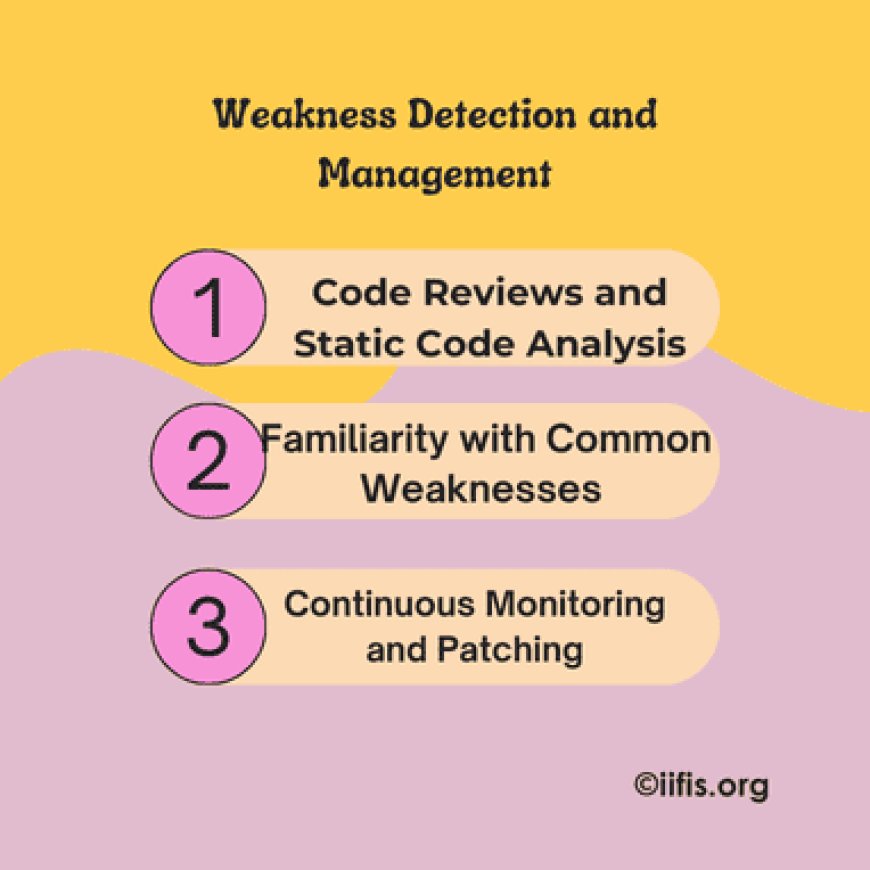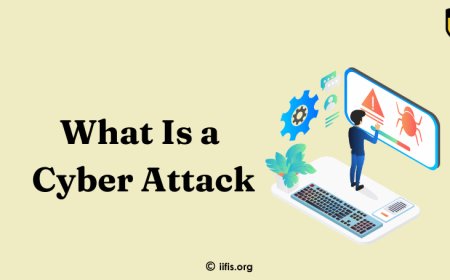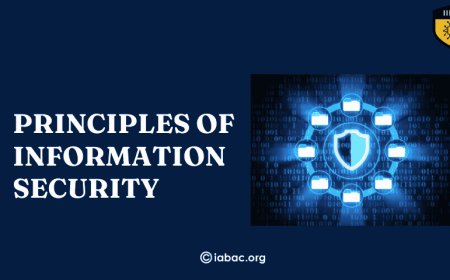Foundational Security Skills for Developer
Master the essential security skills every developer needs to protect applications from vulnerabilities. This foundational course covers key principles, best practices, and practical techniques for secure coding, enabling developers to build resilient, safe software from the ground up.

security is no longer just the responsibility of IT teams; it's essential for developers to build secure applications from the ground up. Foundational security skills are becoming a must-have in a developer’s toolkit to protect sensitive data, prevent violations, and build resilient software. In this blog, we’ll dive into key security skills every developer should master—from secure coding practices to weaknesses management and encryption basics. Whether you're a professional developer or just starting, these skills will help you create more secure, strong applications in an increasingly threat-laden world.
Key Security Essentials
protecting user access is essential for any secure application. Two core components of this are authentication (verifying user identity) and authorization (controlling what verified users can access). Here’s a quick guide to foundational techniques and best practices in each area.
User Authentication Techniques
-
Multi-Factor Authentication (MFA): MFA improves security by requiring multiple verification methods, such as passwords, tokens, and biometrics. This layered approach reduces the risk of unauthorized access.
-
Token-Based Authentication: Commonly used in web apps, token-based methods (like JSON Web Tokens) allow users to access resources securely without re-entering credentials, improving both security and user experience.
Authorization Mechanisms
-
Authentication vs. Authorization: While authentication confirms identity, authorization determines permissions. For example, Role-Based Access Control (RBAC) restricts access based on user roles, while Attribute-Based Access Control (ABAC) uses additional factors like location or device type for more dynamic control.
Password Management Best Practices
-
Secure Storage: Never store passwords in plain text. Hash passwords with secure algorithms (e.g., bcrypt) and add unique salts to prevent dictionary or rainbow table attacks.
-
Strong Password Policies: Encourage users to set strong, unique passwords, using complexity requirements and expiration policies to further enhance security.
By implementing these essential practices, developers can create secure, resilient applications that protect user data and maintain trust in an increasingly complex threat landscape.
Encryption Fundamentals
Encryption is at the core of data protection, ensuring that sensitive information remains secure from unauthorized access. By transforming readable data into unreadable code, encryption is vital for protecting both data in transit and at rest. Here’s a quick breakdown of essential encryption concepts and practices.
Encryption Basics
-
Symmetric vs. Asymmetric Encryption:
In symmetric encryption, a single key is used to both encrypt and decrypt data, making it fast and efficient for large data volumes. Asymmetric encryption, on the other hand, uses a pair of keys—public and private—where the public key encrypts data and the private key decrypts it. Asymmetric encryption is often used for secure key exchange in network communications. -
Why Encryption Matters:
Encryption ensures that even if data is intercepted or accessed without authorization, it remains unreadable, offering a powerful protect for personal, financial, and confidential information.
TLS/SSL for Data in Transit
-
Transport Layer Security (TLS)/Secure Sockets Layer (SSL):
TLS/SSL protocols encrypt data during transfer over networks, preventing eavesdropping and interception. Implementing TLS/SSL is essential for any web application handling sensitive data, as it establishes a secure connection between users and servers. -
How to Implement:
By using TLS certificates, developers can secure data exchanges and build trust with users. Many libraries and frameworks make it easy to enforce TLS, including OpenSSL for backend configurations or Let’s Encrypt for free SSL certificates.
Data at Rest Encryption
-
Importance of Encrypting Stored Data:
Encrypting data at rest protects stored information from unauthorized access if physical security is compromised. This is particularly critical for databases, backups, and file systems containing sensitive information. -
Tools and Libraries for Developers:
Many modern databases, like PostgreSQL and MySQL, offer built-in encryption options. For file-level encryption, libraries like Libsodium and OpenSSL provide versatile tools for encrypting data in applications.
By understanding and implementing these encryption fundamentals, developers can ensure data remains secure both during transit and while at rest, building a strong foundation for data protection in any application.
Secure Communication Practices
Secure communication is vital for maintaining user trust and protecting sensitive data within applications. By following these core practices—securing API endpoints, enforcing HTTPS, and using vetted third-party libraries—developers can build a solid defense against unauthorized access and data violations.
API Security
API endpoints are often key targets for attackers. Here are essential practices to secure them:
-
Use API Keys and Tokens: Require API keys or tokens for authentication to ensure only authorized users and applications can access your APIs. Additionally, use more advanced authentication like OAuth for sensitive data or critical actions.
-
Rate Limiting: Implement rate limiting to prevent abuse and mitigate DDoS attacks. Limiting the number of requests from a single user or IP address can help protect against brute-force attacks and minimize server load.
-
Secure Authentication and Authorization: Always use HTTPS and secure tokens (like JSON Web Tokens, or JWTs) for user and app authentication. For sensitive APIs, consider additional authentication steps, like multi-factor authentication (MFA) or IP allowlisting, to further tighten access.
HTTPS Everywhere
-
Why HTTPS Matters: HTTPS encrypts data transmitted between users and servers, protecting it from interception and tampering. Using HTTPS is essential for all pages, especially those handling personal or sensitive information, as it prevents attackers from Observing on data in transit.
-
Implementing HTTPS: Obtain an SSL/TLS certificate from a trusted certificate authority (CA) or use services like Let’s Encrypt to automate HTTPS implementation. Most modern web frameworks and hosting services support HTTPS setup, making it easier to enforce this standard across all site pages and APIs.
Using Secure Libraries and Packages
-
Selecting Reliable Libraries: Not all third-party libraries are secure, so it’s crucial to choose those with a strong reputation and community support. Evaluate libraries based on recent updates, user reviews, and star ratings on repositories like GitHub.
-
Regular Security Audits: Check your libraries for known weaknesses using tools like OWASP Dependency-Check or Snyk. These tools scan for weaknesses and notify you when a library requires an update or has potential security risks.
-
Avoid Outdated or Unsupported Packages: Stick to libraries that are actively maintained and quickly patched for security flaws. Abandoning outdated libraries reduces risk and maintains compatibility with other modern dependencies in your tech stack.
By securing APIs, enforcing HTTPS, and carefully selecting third-party packages, developers can strengthen their application’s defenses and maintain secure, reliable communication channels for users.
Weakness Detection and Management
Ensuring security in application development requires proactive weaknesses detection and swift management. Here’s a brief guide to key practices:

1. Code Reviews and Static Code Analysis
-
Regular Code Reviews: Peer code reviews help identify security flaws early, providing insights that automated tools may miss.
-
Static Code Analysis Tools: Tools like SonarQube and Fortify catch weaknesses patterns (e.g., injection points) in the code without execution, supporting early detection within the development workflow.
2. Familiarity with Common Weaknesses
Understanding common threats helps developers write secure code. Key examples from the OWASP Top 10 include:
-
Injection Attacks: Prevent with parameterized queries.
-
Cross-Site Scripting (XSS): Sanitize user input to avoid script injection.
-
Broken Authentication: Use secure session management and enforce MFA.
3. Continuous Monitoring and Patching
-
Dependency Management: Regularly update libraries to avoid weaknesses in outdated packages. Tools like Snyk provide real-time alerts.
-
Timely Patching: Prioritize patches to mitigate risks quickly, especially for critical components.
Combining code reviews, knowledge of vulnerabilities, and ongoing monitoring ensures robust, secure applications throughout the development process.
Testing for Security
Security testing is essential for catching weaknesses early and maintaining strong applications. Here’s a quick look at core security testing practices:
1. Unit and Integration Testing for Security
-
Identifying Security Issues Early: Unit and integration tests, focused on security, catch flaws in individual components and interactions before they reach production. Testing for input validation, authentication, and access controls ensures these areas work securely and as intended.
2. Automated Security Testing Tools
Automated tools streamline security testing and provide continuous protection:
-
Snyk: Scans dependencies for known vulnerabilities in libraries and packages.
-
SonarQube: Identifies security issues and code smells, helping developers adhere to secure coding practices.
-
OWASP ZAP: An open-source tool for detecting security weaknesses, particularly in web applications.
3. Penetration Testing and Red Team Exercises
-
Simulated Attacks for Real-World Resilience: Penetration testing mimics real-world attacks to uncover vulnerabilities that might go unnoticed in regular testing. Red team exercises add depth by testing the organization’s response to live threats, helping developers understand weaknesses and improve defense mechanisms.
Incorporating these security testing practices into development fosters a proactive, layered approach to application security, minimizing risk before release.
Building a Security-Conscious Mindset
Creating secure applications goes beyond tools and practices it requires a security-focused mindset throughout the development process. Here’s how to cultivate that mindset:
1. The Culture of Security-First Development
-
Proactive Risk Identification: A security-first approach means developers anticipate risks early, embedding security into every stage of development. This culture minimizes weaknesses and keeps security central to design and implementation.
2. Collaborating with Security Teams
-
Open Communication: Developers and security teams should work closely, enabling swift identification of potential issues and solutions. Developers play a crucial role within the broader security framework, aligning code practices with the organization’s security goals.
3. Staying Updated
-
Resources for Ongoing Learning: Staying informed on evolving security threats and best practices is key. Platforms like OWASP, Security Weekly, and CWE are invaluable resources, providing insights into new threats and effective security practices.
By embedding security awareness, collaborating with experts, and staying informed, developers can make security a seamless part of every project, contributing to a resilient and secure development environment.
Developers today need a strong foundation in security skills to build safe, resilient applications. Key skills like authentication and authorization, encryption, secure communication, and vulnerability detection help protect data and prevent breaches. By integrating security practices—like API protection, continuous monitoring, and collaborating with security teams—developers can catch issues early and maintain secure code.
Starting to apply these skills in projects and staying updated with resources like OWASP, Security Weekly, and IIFIS (International Institute of Information Security will strengthen security knowledge. Embracing security as part of development ensures a safer digital environment and builds confidence in creating secure applications.
























